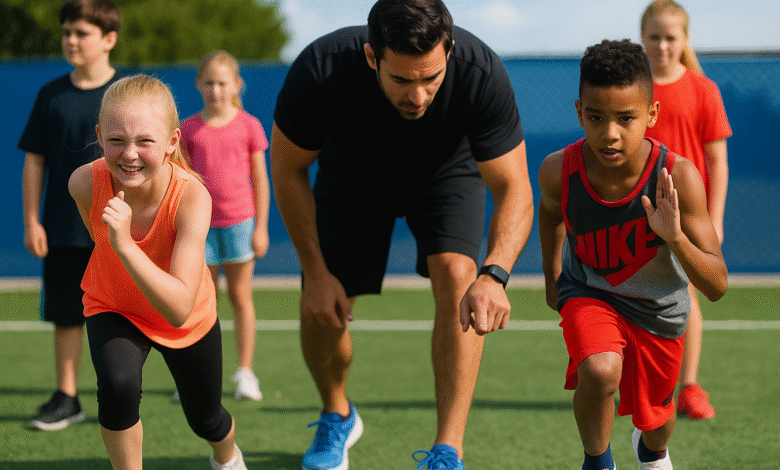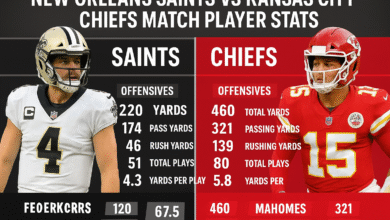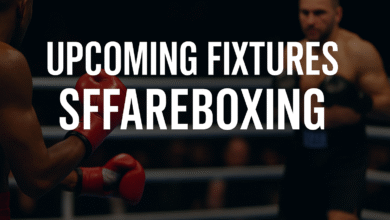Unlocking Athletic Brilliance Through the Sports Harmonicode

Introduction
In the ever-evolving world of sports, athletes and coaches are constantly on the lookout for innovative techniques that can enhance performance and provide a competitive advantage. One such groundbreaking development is the Sports Harmonicode. This unique concept merges the rhythmic power of music with the scientific principles of athletic training, paving the way for a more synchronized and effective performance model. In this article, we’ll explore the foundational concept of the Sports Harmonicode, its origins, applications, and the substantial benefits it offers to athletes across disciplines.
Unpacking the Sports Harmonicode Concept
At its essence, the Sports Harmonicode is a dynamic system that integrates musical rhythm with physical movement. This approach is built on the understanding that both music and sports rely heavily on timing, flow, coordination, and synchronization. By aligning an athlete’s movements with musical patterns, the Sports Harmonicode enhances precision, reflexes, and overall athletic performance.
Unlike traditional methods that often isolate physical conditioning and technique, this system encourages athletes to become more aware of rhythm and tempo, leading to more fluid, consistent, and explosive movements.
The Origins of the Sports Harmonicode
The Sports Harmonicode finds its roots at the intersection of music theory and sports science. Experts noticed that musicians, much like athletes, train in rhythm, discipline, and coordination. These similarities inspired a new perspective: what if the structure of music could amplify the quality of athletic training?
By borrowing principles from both domains, developers created a unified system that athletes could use to improve their neuromuscular responses, mental focus, and overall body awareness.
Applications in Training
The Sports Harmonicode is not confined to one sport—it’s a universally adaptable training tool. From improving balance in gymnastics to refining a tennis serve or boosting stamina in running, its methodology can be customized for nearly every athletic activity.
Through carefully crafted exercises and routines, athletes learn to match their physical actions to rhythmic patterns. Coaches implement these sessions using metronomes, musical cues, or beat-based drills. The goal is to internalize timing and coordination, which leads to improved control and efficiency.
Whether it’s fine-tuning a golf swing, improving footwork in soccer, or perfecting swimming strokes, the principles of Sports Harmonicode provide a universal approach to enhancing athletic performance. Athletes can internalize rhythmic patterns, synchronize their movements, and optimize their performance through targeted drills, exercises, and routines. Additionally, coaches and trainers use Sports Harmonicode as a personalized coaching tool, adjusting training programs to match each athlete’s unique rhythmic tendencies and goals. Just like betting on sports, where strategy and precision matter, mastering these rhythmic techniques can significantly influence success.
Benefits of the Sports Harmonicode
Adopting the Sports Harmonicode system can deliver a wide range of performance benefits:
-
Enhanced Body Awareness: Athletes develop sharper proprioception and spatial intelligence, allowing them to react more accurately during play.
-
Improved Coordination: The rhythmic foundation helps streamline movement, resulting in better balance and stability.
-
Boosted Cognitive Focus: Training with musical rhythm improves mental clarity, reaction time, and concentration under pressure.
-
Injury Prevention: Consistent rhythm-based movement promotes better form and body alignment, reducing the risk of repetitive strain injuries.
-
Personalized Development: Coaches can tailor the rhythm and tempo to each athlete’s natural tendencies, ensuring a customized growth path.
Real-World Impact: Success Stories
There is growing evidence to support the effectiveness of the Sports Harmonicode. Several athletes, from elite Olympic contenders to rising stars in youth programs, have adopted this training strategy with impressive outcomes. They report breaking personal bests, staying more focused during high-pressure moments, and experiencing fewer injuries. These athletes credit the rhythm-based training for helping them stay in the zone and deliver consistent results.
For example, swimmers using beat-synced training reported more efficient stroke timing. Likewise, track athletes improved their stride rhythm, contributing to better race times.
The Future of Sports Harmonicode
As more athletes and coaches discover the potential of the Sports Harmonicode, its role in athletic training is expected to expand. With advancements in wearable tech and AI-based training tools, this method could soon be integrated into mainstream sports programs globally.
Additionally, researchers continue to explore the deeper connections between rhythm, brain function, and athletic output. This ongoing development signals that the Sports Harmonicode may become a cornerstone of future sports science education and elite performance strategy.
Conclusion
The emergence of the Sports Harmonicode marks a significant step forward in the evolution of athletic training. By harmonizing physical movement with musical rhythm, it offers a powerful, holistic approach to unlocking true athletic potential. As athletes strive for greatness, systems like the Sports Harmonicode provide new pathways to excel—not just physically, but mentally and emotionally as well.
Whether you’re a seasoned athlete or just beginning your fitness journey, embracing the rhythm of training through the Sports Harmonicode could be your key to peak performance. Let the music move you, and let your athletic abilities flourish in harmony.
To further motivate athletes, celebrating achievements is essential. Offering custom medals that symbolize excellence and progress can inspire deeper commitment and effort. These medals not only acknowledge milestones but also reinforce the importance of discipline and consistency in training.
Frequently Asked Questions (FAQs) on Sports Harmonicode
Q1: Are Sports Harmonicodes applicable to all sports?
Yes, the Sports Harmonicode can be applied across a wide range of sports. Its core principles—rhythm, timing, and movement—are fundamental to all athletic disciplines, from football and tennis to swimming and track.
Q2: How can athletes integrate Sports Harmonicodes into their training routines?
Athletes can incorporate Sports Harmonicode by using beat-based exercises, rhythmic drills, or syncing movements to musical patterns. Trainers play a vital role in setting the tempo and customizing the drills to suit each athlete’s strengths and needs.
Q3: Are there any success stories or case studies demonstrating the effectiveness of Sports Harmonicodes?
Absolutely. Many athletes have successfully integrated Sports Harmonicode into their regimen and experienced notable performance gains. From Olympic medalists to amateur sports enthusiasts, these stories highlight improved efficiency, sharper focus, and reduced injuries.
Q4: How do Sports Harmonicodes differ from traditional sports training methods?
Traditional training usually emphasizes power, endurance, and technique. The Sports Harmonicode, in contrast, focuses on rhythm and coordination, offering a more holistic and neuromuscular-centered approach to development.
Q5: Is there ongoing research or development in the field of Sports Harmonicodes?
Yes, there is active research exploring new applications and technological integrations. Universities, sports institutes, and performance labs continue to investigate how rhythm-based training influences brain function, reflexes, and overall athletic performance.
Read also:TopHillSport com: Your Trusted Hub for Tech, Business, Gaming, and Crypto


